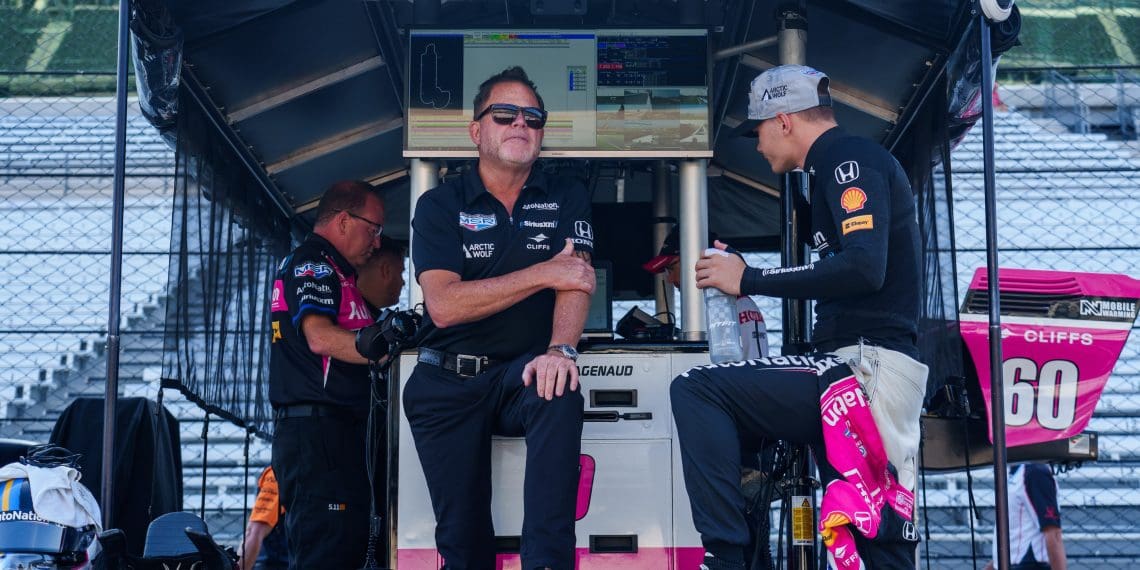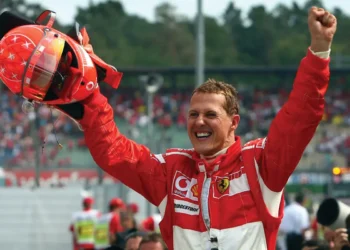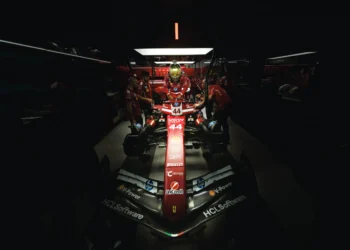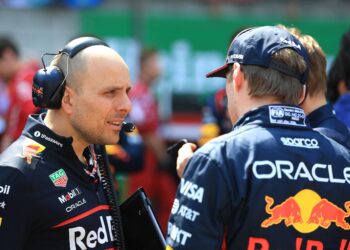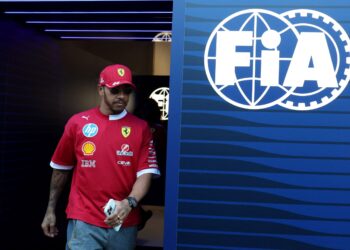Could the high-stakes world of IndyCar racing be on the brink of a pit lane revolution? Meyer Shank Racing (MSR) co-owner Michael Shank has revealed that his team is seriously considering adopting a NASCAR-inspired approach: hiring specialist, fly-in pit crews to handle race-day servicing. This move could upend traditional norms, as teams increasingly look for competitive edges in the sport’s razor-thin margins.
Shank’s musings signal a potential shift in how IndyCar teams approach pit stops, a cornerstone of race strategy and performance.
From Mechanics to Specialists: A Paradigm Shift
Traditionally, IndyCar pit stops rely on mechanics pulling double duty—prepping and maintaining the car during the weekend, then servicing it over the wall on race day. But Shank believes this approach might be due for an overhaul as the demands of modern racing grow more intense.
“A thing that I think is coming is professional pit crews,” Shank told reporters. “We’re talking about D1, D2, D3 athletes who are super competitive and make a decent living doing other things but come in on weekends. It’s not here yet, but I think it’s coming in the next year or two.”
While IndyCar pit stops are already some of the most efficient in motorsport, lasting around eight seconds, Shank points to strategic innovations—like “short fills,” where refueling is deliberately cut short to save time—as scenarios where even a tenth of a second shaved off could make a difference.
NASCAR’s Legacy and IndyCar’s Opportunity
The concept of bringing in athletic, specialist pit crews isn’t new in motorsports. NASCAR has long embraced the practice, even making history when the Wood Brothers brought their stock car pit crew to help Lotus win the 1965 Indianapolis 500. These crews often comprise former college and professional athletes trained for lightning-fast tire changes and precision fueling.
In contrast, IndyCar teams have stuck to tradition, relying on their full-time crews to perform both technical prep and race-day servicing. Shank questions whether this dual-role system is sustainable, especially as competition tightens.
“It’s a lot to put on these guys,” Shank admitted. “We ask for perfection on car preparation and then perfection on pit lane. That’s a big ask, especially with a busier schedule.”
The Case for Fly-In Crews
The advantages of specialist crews are clear: faster, more consistent pit stops and reduced fatigue for mechanics, allowing them to focus on car performance. Shank highlighted how milliseconds gained on pit lane can translate to positions gained on track.
“Every opportunity to make up a tenth or two can beat another team by a nose. If hiring these guys gives us that edge, it’s worth it,” he explained.
The Human Factor: A Delicate Balance
However, Shank acknowledges that shifting to specialist crews isn’t just a matter of performance—it’s also about preserving team morale. For many mechanics, going over the wall is a source of pride and passion.
“About 70 percent of the guys who pit the car love doing it, even though it’s more work for them,” Shank noted. “They’d truly miss that side of it. So, you have to weigh that against pure performance.”
This emotional connection creates a delicate balancing act for teams considering a transition. Shank emphasizes that while the potential performance gains are enticing, the shift must also respect the culture and camaraderie that define IndyCar.
Is IndyCar Ready for Change?
As MSR evaluates whether to implement fly-in pit crews, the decision could mark a turning point for the entire series. With teams like Shank’s already exploring the idea, it’s only a matter of time before others follow suit.
For now, the sport remains at a crossroads: will IndyCar stick to its traditional roots, or will it embrace a new era of pit lane specialization? One thing is certain—teams like Meyer Shank Racing are willing to push the boundaries to gain an edge.

